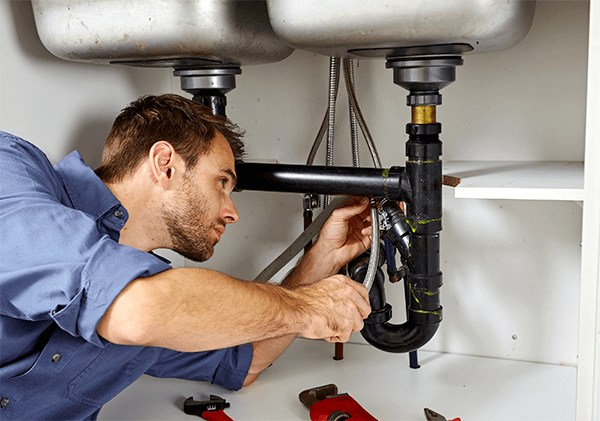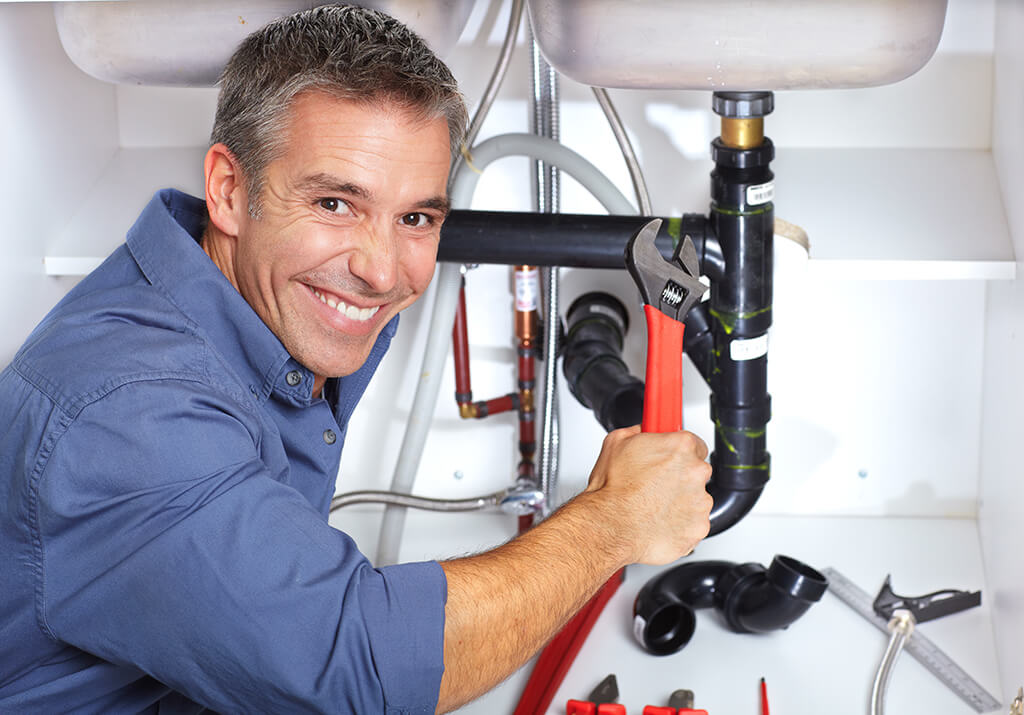How to Addressing Plumbing Challenges in Older Homes
How to Addressing Plumbing Challenges in Older Homes
Blog Article
The publisher is making a number of great observations regarding Common Plumbing Problems in Older Homes overall in this great article which follows.

Older homes frequently feature appeal, personality, and history, yet they can additionally bring a host of plumbing concerns. Whether you're taking care of aging pipelines, low tide pressure, or leakages, knowing just how to deal with these usual issues is crucial to keeping a risk-free and functional home. In this guide, we'll discover the common plumbing challenges faced by older homes and give sensible services to keep your pipes in top form.
Comprehending Usual Plumbing Concerns
Aging Pipelines
One of one of the most usual issues in older homes is maturing pipes. Depending on the period in which your home was developed, the pipelines might be made from products that have actually weakened over time, such as galvanized steel, cast iron, or even lead. These products can corrode, come to be breakable, or develop leakages, leading to water damage and possible carcinogen.
Low Tide Stress
If you're experiencing low water stress, it could be because of mineral deposits, corrosion inside the pipelines, or old components that are no more operating efficiently. This can be a major trouble, specifically in areas like showers and sinks.
Dripping Pipelines
Leakages are another regular concern in older homes, frequently triggered by rusty or damaged pipelines. Also tiny leakages can lead to significant water damage, mold development, and raised water bills if not resolved quickly.
Out-of-date Components
Outdated plumbing components such as taps, toilets, and showerheads not just look old yet may likewise be much less effective, prone to leaks, or inappropriate with modern plumbing requirements.
Pipeline Deterioration
Rust is an usual trouble in older pipes, especially those made from galvanized steel or actors iron. Corroded pipelines can restrict water flow, cause discoloration, and ultimately cause leaks or pipeline bursts.
Examining the Problem of Your Pipes
Examining Visible Pipes
Begin by checking any type of visible pipes in your house, such as those in cellars, crawl spaces, or under sinks. Try to find indicators of deterioration, leakages, or rust, which can indicate underlying concerns.
Looking for Leakages
Look for leakages by checking areas around faucets, commodes, and under sinks. You can likewise check your water meter before and after a duration of no water make use of to find surprise leakages.
Water High Quality Testing
Older pipelines can impact the quality of your water. Conduct a water top quality examination to check for contaminants such as lead, corrosion, or various other pollutants that may be presented by maturing pipes.
Solutions for Usual Plumbing Problems
Changing Aging Pipelines
If your home has old, weakening pipes, take into consideration replacing them with modern products like copper or PEX. This can be a considerable investment, however it will certainly stop future issues and boost the safety and security and integrity of your pipes system.
Fixing Low Tide Pressure
To fix low tide stress, beginning by cleaning or changing old fixtures and getting rid of mineral accumulation in the pipelines. If the issue lingers, it may be essential to replace areas of corroded pipelines.
Fixing and Changing Leaking Pipelines
For small leakages, you can use pipe clamps or epoxy putty as a short-lived solution. Nonetheless, it's best to change dripping pipes entirely to stay clear of more damage.
Upgrading Fixtures
Upgrading old fixtures to modern-day, water-efficient versions can boost your home's plumbing efficiency and decrease water usage. Try to find components with the WaterSense label for the very best performance.
Taking Care Of Pipe Corrosion
If your pipes are corroded, changing them with corrosion-resistant materials like copper, PVC, or PEX is the very best service. Normal evaluations and water quality upkeep can assist prevent better corrosion.
When to Call a Specialist
While some plumbing issues can be taken care of with DIY remedies, there are times when it's finest to hire a specialist. If you're taking care of major leakages, extensive corrosion, or are not sure concerning the problem of your pipelines, a qualified plumber can offer skilled analysis and fixing.
Preventive Upkeep Tips
Normal Inspections
Consistently inspect your plumbing system for signs of deterioration. Capturing concerns early can prevent pricey repairs down the line.
Water Stress Regulation
Ensure your water pressure is within the recommended array to stay clear of emphasizing your pipelines and components. A plumber can install a stress regulatory authority if required.
Water Top Quality Maintenance
Install water filters or softeners if your water high quality is poor. This can safeguard your pipes and fixtures from damage caused by tough water or contaminants.
Positive Pipe Replacement
If your home has older pipelines, consider aggressive substitute prior to significant concerns arise. This can save you from emergency repair work and water damage.
Verdict
Managing pipes concerns in older homes needs a mix of caution, precautionary maintenance, and prompt upgrades. By comprehending the common difficulties and understanding when to seek expert help, you can ensure your plumbing system continues to be practical and trustworthy for many years to come.
Common Plumbing Issues in Older Homes and How to Fix Them
Owning an older home in Australia comes with its unique charm and a set of challenges, especially when it comes to plumbing. The Sunshine Coast has many older properties that can harbour plumbing problems that aren t just inconvenient but potentially costly. Here s a look at some common plumbing issues in older homes and expert advice on how to handle them.
Outdated Piping Materials
Many older homes were built with galvanised steel, cast iron, or even lead pipes, materials that are far from ideal by today s standards. Galvanised pipes are prone to corrosion and clogging, while lead pipes pose serious health risks.
How to Fix:
Replacing old pipes is a job for a professional. Upgrading to copper or PVC piping not only enhances water quality and flow but also increases the property s safety and value. If you suspect your home has outdated materials, a licensed plumber can conduct a thorough inspection and recommend the best course of action.
Corrosion and Pipe Degradation
Over time, exposure to water and minerals can cause pipes to corrode, leading to leaks, bursts, and water contamination. Corrosion is especially common in homes over 50 years old.
How to Fix:
Regular inspections can catch early signs of corrosion. If corrosion is found, the affected section of piping often needs to be replaced. For homes with extensive corrosion, a complete plumbing overhaul might be necessary. It s crucial to consult with a plumbing expert to understand the extent of the issue.
Tree Root Intrusion
Older neighbourhoods usually have mature trees whose roots can intrude into pipe lines, causing blockages or damage. This is particularly problematic for sewer lines, where roots seek out water sources.
How to Fix:
A plumber can use a specialised camera to inspect sewer lines for root intrusion. If roots are a problem, methods like root cutting or hydro-jetting can clear the obstruction. In severe cases, part of the pipe may need replacing. Consider root barriers around the piping to prevent future issues.
Inadequate Water Pressure
Low water pressure in older homes can be due to various factors, including corroded water lines, sediment build-up in pipes, or outdated fixtures.
How to Fix:
First, check if the low pressure is isolated to one area or throughout the house. Replacing old fixtures can sometimes resolve the issue. However, if the problem is more widespread, it might be due to sediment or corrosion. Flushing the system or replacing the affected pipes usually restores normal pressure. Again, a professional assessment is advisable.
Outdated Fixtures
Older homes often feature fixtures that are not only visually dated but functionally inefficient. This includes everything from toilets and taps to showerheads and washing machine hoses.
How to Fix:
Updating these fixtures can improve both water efficiency and the aesthetic appeal of your home. Modern fixtures are designed to conserve water, which can significantly reduce your water bill and lessen your environmental impact.
Conclusion
Maintaining the plumbing in an older home requires a proactive approach. Regular checks and updates are key to preserving these beautiful properties. If you re facing plumbing issues in your older home, it s best to call on experienced professionals like Green & Gold Plumbing & Gas. With the right expertise, even the most daunting plumbing problems can be resolved, ensuring that your home s character is maintained while its functionality is enhanced.
https://gandgplumbing.com.au/common-plumbing-issues-in-older-homes-and-how-to-fix-them/

As a passionate person who reads about Common Plumbing Challenges In Old Buildings, I thought sharing that piece of content was a good idea. I beg you take a moment to share this entry if you appreciated it. Thank you for being here. Kindly check up our site back soon.
Call Today Report this page